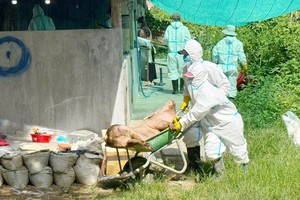With solid evidence pointing to proper nutrition being essential for survival, health and growth, the World Health Organization on September 25 raised malnutrition high on the agenda of the Regional Committee for the Western Pacific.

The Regional Committee, which is the WHO governing body in the Region, is meeting in Hanoi from September 24-28 to review the work of the organization and to set a future direction to improving the health of the people across the Western Pacific Region.
Addressing the Regional Committee, Dr Shin Young-Soo, WHO Regional Director for the Western Pacific, said that despite a drop in rates in the Region, "there is no room for complacency as the level of maternal and young under-nourished children continues to be too high.
At the same time, the rising rate of obesity and non-communicable diseases represents an epidemic—one that is growing fast in our Region. This double burden of malnutrition leads to long-term negative impact on the health and development of the people and for the economies of Member States."
Adequate provision of nutrients, beginning at the earliest stages of life, is essential to ensure good physical and mental development and long-term health and productivity.
Dr Shin warned that many countries in the Region now tend to focus on the problem of over-nutrition even as under-nutrition and micronutrient deficiencies continue to be a problem.
In an effort to address malnutrition, the Regional Committee, comprising of 37 countries and areas in the Western Pacific, pledged to scale up and sustain cost-effective nutrition intervention to prevent more than 100,000 under five-year-old child deaths per year in the Region. This means saving more than 270 lives of children under five years of age every day or 11 lives per hour.
Dr Shin urged the Regional Committee to expand areas for action, to identify targets and prioritize actions in health and other sectors, and to adopt a time frame and indicators for monitoring.
The Regional Committee is set to endorse a resolution to scale up nutrition, based on the WHO Comprehensive Implementation Plan on Maternal, Infant and Young Child Nutrition. It called for increased investment in 2012–2025 to expand nutrition interventions, with targets to reduce substantially the double burden of malnutrition and related mortality, including stunting and wasting, anaemia in women and low birth weight.
At the same time, the plan seeks to increase exclusive breast-feeding and to stop the rapid increase in obesity among children.
The WHO Regional Office convened a high-level panel on food and nutritional security, in conjunction with the Regional Committee meeting, to help increase joint action among United Nations agencies and further strengthen inter-agency collaboration in support of Member States in the Region.
WHO will also intensify efforts to push forward Scaled up Nutrition, a multi-stakeholder movement to fight hunger and under-nutrition using cost-effective interventions. Nutrition will be integrated not only in health programs but also in agriculture, education, employment, social welfare and development programs.
Maternal and child under-nutrition accounts for 11 percent of the global burden of disease and results in more than 100,000 child deaths annually in the Region. Anaemia affects 22 percent of non-pregnant women of reproductive age and 31 percent of pregnant women.
Between 4 to 48 percent of children less than five years are stunted based on data from 12 countries in the Region that reported stunting; vitamin A-deficiency is a public health problem in at least six countries; and 22 percent of school children have insufficient iodine intake. Obesity rates are rapidly increasing in both children and adults, increasing NCD risks for both.
Some 20 million children are born with below average birth weight each year, and stand a greater risk for acquiring non-communicable diseases later on in life.
























